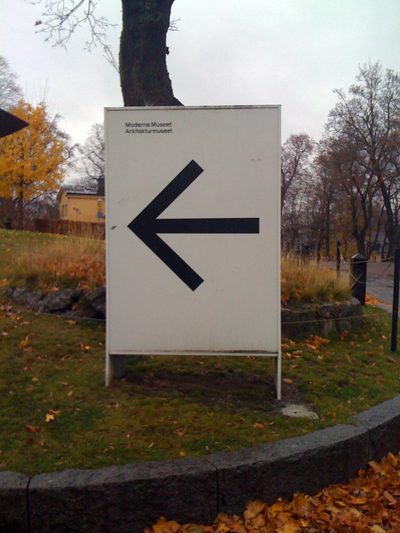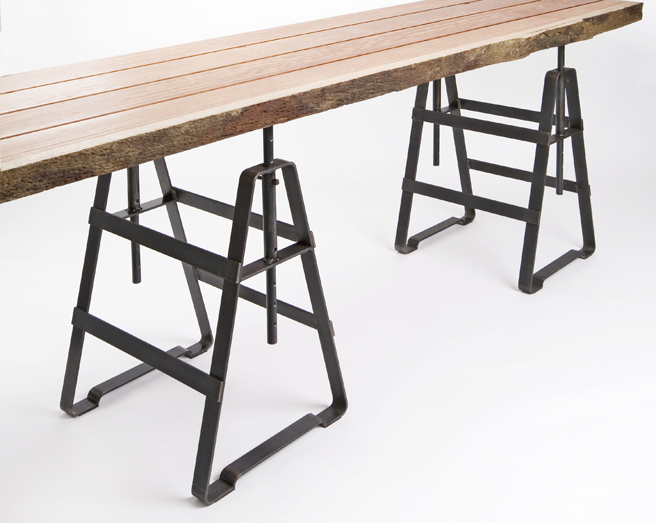Schwarz
View current page
...more recent posts
proper design w/ gorton steam valves
counter top bottle tree
vz
nickle plated airport runway light
via vz
road food
vz
First of all, you will notice that the word 'band' is in quote marks, only because, although you will indeed have a band name, it is highly likely that your industrial project will be completely solo. Never use your own name; always refer to the band name when referring to your work.
Since the whole idea of Industrial Music is to convey the complete fusion between Technology and Humanity, it is imperative that the band name will reflect this. Ideally, the name should have 2 words, with the first being a prefix, usually implying a technological concept, having to do with computers or any scientific field of your choice, and the second being a word, usually implying a human concept, such as a part of the human anatomy or physiology, some biological term, or, even better, a psychiatric term. Ideally, it should also be a word reflecting something that is diseased or mutated. Human diseases are great words to be used in band names; Dog diseases are even better ( e.g., rabies, distemper, kennel cough). When in doubt, it is always good to use the title of an old Skinny Puppy song (or, better yet, an obscure passage of Skinny Puppy's lyrics) for your band name.
Finally, adding a small Germanic prefix before the band name will give you a lot of credibility. For example, just the addition of a simple 'Die,' 'Das,' or 'Der' to the band name will make many people think that you hail from Essen, in the Ruhr Valley (the most industrial part of Germany), even though you may, in fact, hail from Kansas City. Spelling in a German way is also essential (even using German words, it helps to have taken German in highschool, although we will talk more about that in the 'vocals and lyrics' section of this guide later on), especially the use of accent marks and umlauts, although, be very careful not to use too many umlauts, since this can make you look like a Swedish death metal band. The simplest way to 'Germanify' your band name is to use a lot of K's, and replace any word that normally uses a 'C' with a 'K' (e.g., Mechanic should be replaced by Mekkanik).
Here are some examples of acceptable prefixes (reflecting technology or biology): elektro-, cyber-, neural- (or neuro-), bio-, geo-, neo-, terminal, somato-, trans-, sonic, magnetic
Here are some examples of acceptable words to use after the prefixes: christ, blastoma, tumor, implant, function, capillary, psychosis, carcinoma, carcinogen, mutation, wire, hemoglobin, nerve, myopia, manipulation, renal failure, influenza, schizophrenia, diptheria, castration, starvation, ebola
As you can see, the possibilities are endless. Medical textbooks provide some valuable inspiration. If you use an obscure scientific term, others may think that you are quite learned, and, in fact, may have gone to university to obtain some sort of scientific degree, and that you can quit industrial music at any time to go work at (Bio-Tech firm of your choice), but, because of your dedication to industrial music, you have foregone this lucrative career.
Finally, you don't really have to follow the old rule of being careful not to give yourself a band name that is already taken. In fact, if you do take on a band name from an already existing industrial band, provided they are obscure enough and release their albums on a different continent from yours, people will probably think their releases are yours. If, though, word gets out that you have to change your name, then make sure that this legend is repeated ad infinitum by your fans. For example, 'His band used to be called Implant, but he had to change it to Neural Implant, because there already is a band called Implant from Belgium.' This will make your fans sound like they really know about the music scene, and will imply that your music appeals to people who listen to European industrial bands.
hungry i
via abaton facebook
afc parsing the new museum controversy
custom vinyl lettering
cityproof windows
worst fucking growing season ever
11 boxes in tokyo house
again, via justin
strammer max / wooden spoon tension stool
justin found this one
obsolete pedia
via vz
bale of burlap
burlap history via earthbag building blog / sandbag
developer sells 7 acres of coney island to nyc
There is a commonly held belief that Helvetica is the signage typeface of the New York City subway system, a belief reinforced by Helvetica, Gary Hustwit’s popular 2007 documentary about the typeface. But it is not true—or rather, it is only somewhat true. Helvetica is the official typeface of the MTA today, but it was not the typeface specified by Unimark International when it created a new signage system at the end of the 1960s. Why was Helvetica not chosen originally? What was chosen in its place? Why is Helvetica used now, and when did the changeover occur? To answer those questions this essay explores several important histories: of the New York City subway system, transportation signage in the 1960s, Unimark International and, of course, Helvetica. These four strands are woven together, over nine pages, to tell a story that ultimately transcends the simple issue of Helvetica and the subway.
the least unstable primer
im still thinking about starting up painting again and looking around for very heavy weave fabric to use as a painting surface. ive already looked into weighty linens and canvas and even woven jute etc area rugs with heavier woven textures. still not satisfied. then it hits me, blasting mats!
History Behind Adirondack Chairs
There is a little town on the edge of Lake Champlain, by the Adirondack Mountains, called Westport. The first Adirondack chairs, called Westport chairs, were named after this town. In Blue Mountain Lake, New York, the Adirondack Museum proudly preserves the Adirondack chair's interesting history.
Trial and error
Each summer in Westport, New York, a man named Thomas Lee enjoyed time with his large family. Stony Sides, the home this family occupied, had a shortage of patio furniture and Lee felt he could not find relaxation. So, in 1903, on the lawn in front of the house, Thomas Lee began nailing boards together, crafting new chair designs for his 22-member family to sample. History relates that, with all of this feedback, Lee created a unique new chair with a slanted back and seat, and the now well-recognized spacious armrests. Lee's family whole-heartedly approved.
Harry Bunnell
Thomas Lee knew a carpenter who owned a modest shop in town. Lee showed his new creation to the carpenter, Harry Bunnell. Bunnell predicted that the yearly residents flocking to the region during the summer would really appreciate Lee's chair. Although Lee originally intended the Adirondack chairs to make his family's summer stay at Stony Sides more pleasant, Bunnell saw the potential for great profit. In 1904, Bunnell requested a patent, calling the Adirondack chair the Westport chair. In the summer of 1905, and without Lee's knowledge, Harry Bunnell secured the patent for what would become one of the most recognized furniture pieces ever. Best Quality! Mahogany Adirondack Chair
Success
Harry Bunnell's Westport Adirondack chair became popular all around the region. Over a twenty year period, Bunnell experimented with some variations on the original, including child Adirondack chairs and tete de tetes. Bunnell's Adirondack chairs were made of hemlock, painted in either dark brown or green, and signed by the carpenter himself. Today, Bunnell's original chairs come at a hefty price, about $1,200 each (Bunnell sold them for around $4.00).


